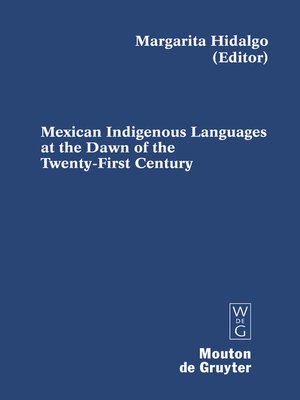Mexican Indigenous Languages at the Dawn of the Twenty-First Century
ebook ∣ Contributions to the Sociology of Language [CSL]
By Margarita Hidalgo

Sign up to save your library
With an OverDrive account, you can save your favorite libraries for at-a-glance information about availability. Find out more about OverDrive accounts.
Find this title in Libby, the library reading app by OverDrive.



Search for a digital library with this title
Title found at these libraries:
| Library Name | Distance |
|---|---|
| Loading... |
This volume explores the reversing language shift (RLS) theory in the Mexican scenario from various viewpoints: The sociohistorical perspective delves into the dynamics of power that emerged in the Mexican colony as a result of the presence of Spanish. It examines the processes of external and internal Indianization affecting the early European protagonists and the varied dimensions of language shift and maintenance of the Mexican colonial period.
The Mexican case sheds light upon language contact from the time in which Western civilization came into contact with the Mesoamerican peoples, for the encounter began with a demographic catastrophe that motivated a recovery mission. While the recovery of Mexican indigenous languages (MIL) was remarkable, RLS ended after fifty years of abundant productivity in MIL. Since then, the slow process of recovery is related to demographic changes, socioreligious movements, rebellion, confrontation, and survival strategies that have fostered language maintenance with bilingualism and language shift with culture preservation.
The causes of the Chiapas uprising are analyzed in connection with the language attitudes of the indigenous peoples, while language policy is discussed in reference to the new Law of Linguistic Rights of the Indigenous Peoples (2003). A quantitative classification of the MIL is offered with an overview of their geographic distribution, trends of macrosocietal bilingualism, use in the home domain, and permanence in the original Mesoamerican settlements. Innovative models of bilingual education are presented along with relevant data on several communities and the philosophies and methodologies justifying the programs. A model of Mazahua language use is presented along the Graded Intergenerational Disruption Scale.







